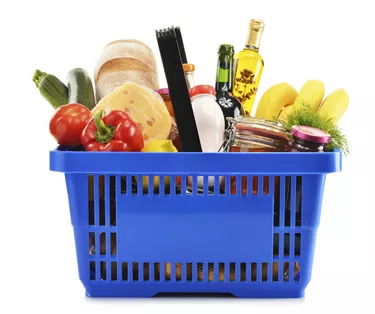
A Laspeyres index is a way of expressing how prices today compare with those at some point in the past. An important feature of the Laspeyres formula is that it takes into account not only the price something sold for, but also the quantity that was sold. If, say, people buy twice as much milk as they do bread, then a price increase for milk will have twice the impact of an identical price increase for bread.
Data Needed for the Calculation
Video of the Day
To calculate a Laspeyres index, you first must decide what items you're running a price comparison on. For each of those items, you need three data points: the price today; the price in the base year, which is the time you're comparing today's prices with; and the amount of the item sold in the base year.
Video of the Day
Running the Formula
For each item, multiply today's price by the quantity sold in the base year. Add up all those results. This is the aggregate cost today. Call this number A. Now, for each item, multiply the base year price by the quantity sold in the base year. Add up all those results. This is the aggregate cost in the base year. Call this number B. Divide A by B, and the result is the Lespeyres index. An index of 1 means that prices now are the same as in the base year. An index over 1 means prices have risen; 1.32 would mean they're 32 percent higher. An index under 1 means prices have fallen.
A Simplified Example
For a Laspeyres index that attempts to capture the movement of prices in general, or within a certain sector of the economy, the calculation can involve thousands of goods and services. For the sake of this example, say there are only three things that matter: bread, milk and sugar: Bread: current price, $1.50 a loaf; base year price, $1.25; base year sales: 2,000 loaves. Milk: current price, $3 a gallon; base year price, $2.50; base year sales, 10,000 gallons. Sugar: current price, $1 a pound; base year price, 75 cents; base year sales, 1,000 pounds. Plug the numbers into the formula: A = ($1.50 x 2,000) + ($3 x 10,000) + ($1 x $1,000) = $34,000 B = ($1.25 x 2,000) + ($2.50 x 10,000) + ($0.75 x $1,000) = $28,350 A/B = 1.203 For the items sampled, prices are roughly 20 percent higher now than in the base year.